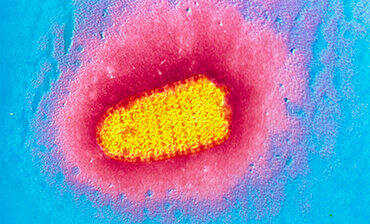Rabies

Rabies is a disease caused by the rabies virus (a Lyssavirus). Classic rabies is a zoonosis (infection that could spread from animals to humans), and most animals are susceptible to it. Transmission normally occurs through a bite or direct contact with the saliva of an infected animal. After an incubation period of 3–8 weeks (though sometimes much longer), non-specific symptoms appear, such as headache, fever and numbness of the skin around the site of the bite. A phase of seizures and eventually coma follows, which almost invariably lead to the patient’s death. Prevention is possible by vaccination, including post-exposure immunisation to be given as soon after the exposure as possible.



